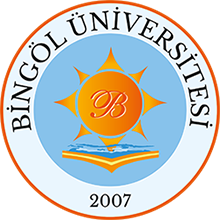Sterol Composition of Sponges, Cnidarians, Arthropods, Mollusks, and Echinoderms from the Deep Northwest Atlantic: A Comparison with Shallow Coastal Gulf of Mexico
Tarih
2020Yazar
Carreon-Palau, Laura and Sen Ozdemir, Nurgul and Parrish, Christopher C.
and Parzanini, Camilla
Üst veri
Tüm öğe kaydını gösterÖzet
Triterpenoid biosynthesis is generally anaerobic in bacteria and aerobic
in Eukarya. The major class of triterpenoids in bacteria, the hopanoids,
is different to that in Eukarya, the lanostanoids, and their
4,4,14-demethylated derivatives, sterols. In the deep sea, the
prokaryotic contribution to primary productivity has been suggested to
be higher because local environmental conditions prevent classic
photosynthetic processes from occurring. Sterols have been used as
trophic biomarkers because primary producers have different
compositions, and they are incorporated in primary consumer tissues. In
the present study, we inferred food supply to deep sea, sponges,
cnidarians, mollusks, crustaceans, and echinoderms from euphotic zone
production which is driven by phytoplankton eukaryotic autotrophy.
Sterol composition was obtained by gas chromatography and mass
spectrometry. Moreover, we compared the sterol composition of three
phyla (i.e., Porifera, Cnidaria, and Echinodermata) collected between a
deep and cold-water region and a shallow tropical area. We hypothesized
that the sterol composition of shallow tropical benthic organisms would
better reflect their photoautotrophic sources independently of the
taxonomy. Shallow tropical sponges and cnidarians from environments
showed plant and zooxanthellae sterols in their tissues, while their
deep-sea counterparts showed phytoplankton and zooplankton sterols. In
contrast, echinoids, a class of echinoderms, the most complex phylum
along with hemichordates and chordates (deuterostomes), did not show
significant differences in their sterol profile, suggesting that
cholesterol synthesis is present in deuterostomes other than chordates.
Koleksiyonlar

DSpace@BİNGÖL by Bingöl University Institutional Repository is licensed under a Creative Commons Attribution-NonCommercial-NoDerivs 4.0 Unported License..













